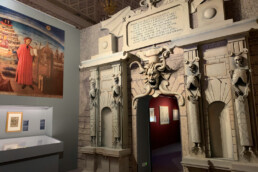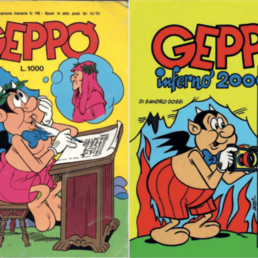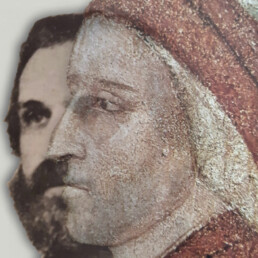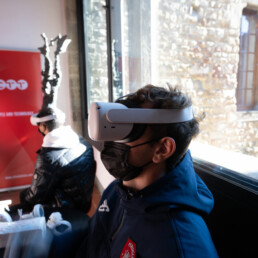“Dante scienziato” explored in an exhibition at Palazzo Pitti organized with the Uffizi and the Galileo Museum
Manuscripts, drawings, engravings, maps of an imagined afterlife, scientific instruments and video reproductions of earth and the cosmological structure of the Universe as they were known by the Supreme Poet, on display until March 6, 2022

In the year of Dante, the poet was analyzed through many different perspectives, highlighting his multifaceted character and his ability to be a man of his time while also being a contemporary figure. With the exhibition titled “From Hell to Empyrean: Dante’s world between science and poetry”, this aspect is investigated and represented with a series of documents and tools that evoke the world represented in his writings.
The exhibition is hosted at Palazzo Pitti, where it will be visible until March 6, 2022. It was put together with the patronage and support of the National Committee for the celebration of the 700th anniversary of the death of Dante Alighieri, and thanks to the collaboration with the Galileo Museum and the Uffizi Galleries. With this unique event, the many initiatives of the year of Dante come to a conclusion. The exhibition is curated by the Deputy Director of the Galileo Museum, Filippo Camerota, alongside a panel of scholars who are part of the scientific committee of the exhibition.
Galileo and Dante’s Hell
Taking its cue from Galileo’s academic lectures on the size and dimension of Dante’s Inferno – where the scientist defined the poet as a “choreographer and architect” – the exhibition frames Dante’s scientific skills in the culture of his time, tracing Alighieri as a doctor, abbacist, geometrist, geologist and cosmographer. The passages of the Comedy, the Convivio and the Questio de aqua et terra are explored through the exhibition made up of artistic works, manuscripts, three-dimensional models and multimedia that illustrate the cosmological system and the physical and spiritual geography of Dante’s works.
Particular emphasis is given to the relationship with Islamic culture which clearly interested the Supreme Poet. He was an expert on Averroè’s natural philosophy, Avicenna’s medical science, and Al-Farghani’s astronomical work. Almost all the astronomical information of Al-Farghani comes from Kitāb fī ģiawām i’ilm an-nuģiūm by Al-Farghani – known in the West as Liber de aggregationibus scientiae stellarum in the Latin translation by Gherardo da Cremona – from which almost all astronomical information of Alighieri is derived.
The exhibition itinerary
The sections of the exhibition replicate the tripartite division of the Comedy. The itinerary is divided into three rooms which each represent the three canticles. The first, Inferno, sees the visitor immersed in the bowels of the earth. Looking up at the domed roof, they can see the lands that emerged from inside, representing the point of view of Lucifer, whose immense body is suspended at the top of the great conical chasm that houses the souls of the damned. In Purgatory, the room is covered by the starry sky of the southern hemisphere, where Dante imagines himself once he has gone out “to see the stars”. In the last one, Paradiso, the visitor finds himself suspended between the material world, reproduced on the floor according to the Ptolemaic system, and the spiritual world, represented on the dome by the angelic hosts that rotate whirling around the very luminous point from which everything originates and towards which everything is stretched out.
The world according to Dante
In addition to precious original works including manuscripts, prints, drawings, engravings, world maps and scientific instruments, there are high resolution reproductions of non-transportable pieces, featuring large three-dimensional models that represent earth and the cosmological structure of the Universe, as they were known at the time of Dante, as well as films made by the Multimedia Laboratory of the Galileo Museum. A video produced by Infini.to-Planetario di Torino for the Italian Space Agency compares Dante’s world with modern explorations of the Solar System. Furthermore, thanks to two immersive multimedia projections produced by camerAnebbia, visitors are transported inside the extraordinary miniatures of a valuable manuscript of the Comedy kept in the British Library, allowing them to relive the experience of the cosmic journey into infinity undertaken by the poet.
You can virtually view the works of the exhibition on the website (https://mostre.museogalileo.it/dante/).




